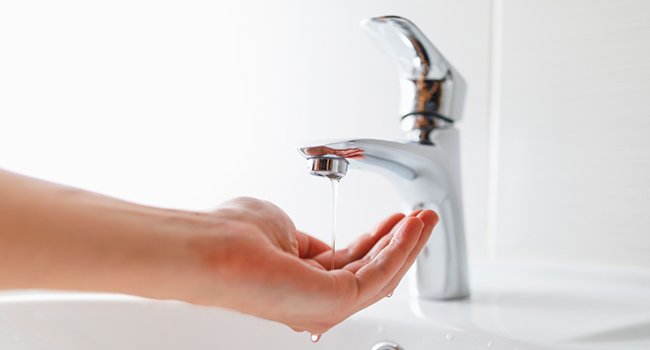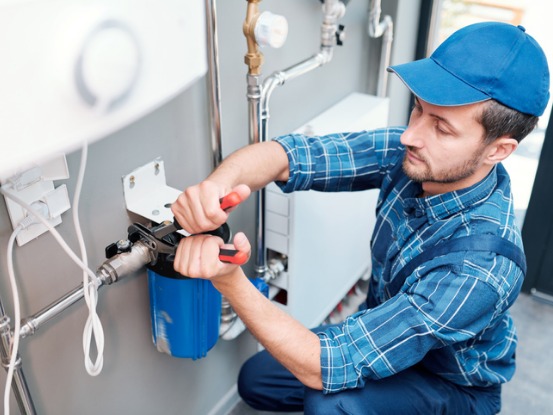Quick Methods for Solving Low Water Pressure in Your Home
Quick Methods for Solving Low Water Pressure in Your Home
Blog Article
This article further down involving Dealing with Low Water Pressure in Your Home is extremely informative. Read it for yourself and figure out what you think of it.

Low tide stress in your house can be an aggravating issue, impacting whatever from bathing to washing recipes. If you're experiencing weak water circulation, there are numerous feasible causes and services to explore. In this overview, we'll review typical reasons for low tide pressure and useful actions to resolve the concern successfully.
Intro to Low Tide Stress
Low water pressure happens when the flow of water from your taps, showers, and other fixtures is weak than normal. This can make daily jobs much more challenging and much less efficient. Comprehending the reasons for low water pressure is critical to discovering the right option.
Common Sources Of Low Water Stress
Pipe Obstructions
Over time, pipelines can become obstructed with natural resource, debris, or debris, limiting the flow of water. This is a typical problem in older homes with galvanized steel pipelines.
Deterioration
Rust within pipes can lead to leaks and minimized water stress. Corrosion accumulation can tighten water flow, specifically in maturing plumbing systems.
Faulty Pressure Regulatory Authorities
Stress regulatory authorities are responsible for preserving constant water stress in your home. If they malfunction, it can lead to low water pressure or unequal flow throughout your home.
Local Water System Issues
Often, the problem lies outside your home. Local water system issues, such as main line leakages or maintenance work, can momentarily minimize water stress in your area.
Exactly How to Detect Low Water Pressure
Inspecting Taps and Components
Begin by testing the water pressure at various faucets and components throughout your home. If the concern is isolated to specific locations, it might show local problems.
Examining Pipes
Evaluate visible pipes for indicators of leakages, deterioration, or obstructions. Focus on any kind of uncommon noises, such as banging or rattling pipes, which might suggest issues within the plumbing system.
Consulting with a Plumber
If you're incapable to identify the root cause of low tide stress, take into consideration working with an expert plumber to conduct a complete assessment. They can identify underlying problems and recommend proper services.
Do It Yourself Solutions to Repair Low Water Stress
Cleaning Up Aerators and Showerheads
Natural resources can accumulate in aerators and showerheads, reducing water circulation. Remove and cleanse these components frequently to boost water pressure.
Flushing Water Heater
Sediment build-up in the water heater can limit flow and minimize effectiveness. Purging the container occasionally assists get rid of debris and preserve optimum performance.
Examining Stress Regulatory Authority
Guarantee that the stress regulatory authority is operating properly. Changing or replacing the regulator can help restore proper water pressure throughout your home.
Clearing Up Clogs in Pipeline
For minor obstructions, attempt making use of a plumbing serpent or chemical drainpipe cleaner to clear obstructions in pipelines. Beware when using chemicals and follow safety standards.
When to Call a Professional Plumber
If do it yourself initiatives fall short to settle the issue or if you suspect considerable plumbing issues, it's finest to seek assistance from an accredited plumber. They have the proficiency and tools to attend to complex problems safely and effectively.
Preventive Measures to Maintain Water Pressure
Normal Upkeep
Set up routine maintenance for your plumbing system to stop issues such as deterioration, leakages, and blockages. Attending to small problems early can aid avoid even more considerable fixings later.
Mounting a Pressure Booster
Take into consideration mounting a stress booster pump to improve water stress in locations with constantly reduced flow. This can be especially useful for multi-story homes or homes with high-demand components.
Surveillance Water Usage
Be mindful of water use habits and stay clear of overtaxing the plumbing system. Easy changes, such as incredible showers and laundry lots, can help preserve sufficient water stress.
Final thought
Dealing with low water pressure can be aggravating, but determining the underlying causes and applying appropriate remedies can recover ideal flow throughout your home. Whether it's cleaning up aerators, inspecting pipes, or seeking advice from a plumber, taking positive steps can ensure a stable supply of water for your everyday requirements.
FOUR WAYS TO FIX LOW WATER PRESSURE NOW
Turning on a shower or faucet only to find the water comes out in a sad, slow drizzle is never a good feeling. How exactly are you supposed to wash a pan or take a quick shower when it takes 10 minutes just to rinse off a little soap? The good news is that when your water pressure is bad, there's always a cause: typically one that can be easily fixed. Here are some of the most common causes of low pressure and what you can do to fix the issue:
DEBRIS AND MINERAL DEPOSIT BUILDUPS
If you notice low water pressure from just one or two of the fixtures in your house, the problem likely has to do with debris buildup. Water is full of minerals and other debris, all of which can accumulate in your pipes and on your fixtures. This can cause a blockage that affects how much water flows through. To fix this, try filling a small plastic bag with white vinegar, and use a rubber band to hang it around your showerhead or faucet. Let the head of the fixture soak for a few hours, and the vinegar should loosen the deposits.
WATER LEAKS
Leaks are another common cause of low water pressure. If water is flowing out of your plumbing through a hole or crack before it can reach your fixture, the pressure coming out of the faucet or showerhead will be lower. A plumbing professional is your best bet for finding and repairing a leak in your water supply pipes.
Leaks are another common cause of low water pressure. If water is flowing out of your plumbing through a hole or crack before it can reach your fixture, the pressure coming out of the faucet or showerhead will be lower. A plumbing professional is your best bet for finding and repairing a leak in your water supply pipes.
FOUR WAYS TO FIX LOW WATER PRESSURE NOW
Turning on a shower or faucet only to find the water comes out in a sad, slow drizzle is never a good feeling. How exactly are you supposed to wash a pan or take a quick shower when it takes 10 minutes just to rinse off a little soap? The good news is that when your water pressure is bad, there's always a cause: typically one that can be easily fixed. Here are some of the most common causes of low pressure and what you can do to fix the issue:
DEBRIS AND MINERAL DEPOSIT BUILDUPS
If you notice low water pressure from just one or two of the fixtures in your house, the problem likely has to do with debris buildup. Water is full of minerals and other debris, all of which can accumulate in your pipes and on your fixtures. This can cause a blockage that affects how much water flows through. To fix this, try filling a small plastic bag with white vinegar, and use a rubber band to hang it around your showerhead or faucet. Let the head of the fixture soak for a few hours, and the vinegar should loosen the deposits.
WATER LEAKS
Leaks are another common cause of low water pressure. If water is flowing out of your plumbing through a hole or crack before it can reach your fixture, the pressure coming out of the faucet or showerhead will be lower. A plumbing professional is your best bet for finding and repairing a leak in your water supply pipes.
Leaks are another common cause of low water pressure. If water is flowing out of your plumbing through a hole or crack before it can reach your fixture, the pressure coming out of the faucet or showerhead will be lower. A plumbing professional is your best bet for finding and repairing a leak in your water supply pipes.
A VALVE ISSUE
If you have low water pressure throughout your home, check your main shut-off valve to make sure it's completely open. You may also want to see if there's a pressure-reducing valve installed. If there is, have a plumber help you adjust the settings to get the pressure you're looking for.
OTHERS USING WATER
Believe it or not, your low water pressure could be caused by your neighbors. If you notice low pressure at certain times of day, it may be because you and the people living next to you have similar schedules - when everyone is showering at the same time, the pressure will be lower in every home. Low pressure throughout the neighborhood may also be caused by an issue with your municipal water supply. If that's the case, call the supplier to see if they're working on the issue.
https://www.rotorooter.com/blog/water-leaking/low-water-pressure-fixes/

I'm certainly very involved in Dealing with Low Water Pressure in Your Home and I really hope you enjoyed reading the entire blog posting. Liked our write up? Please quickly share it. Help someone else locate it. Many thanks for your time invested reading it.
Visit The Following Page Report this page